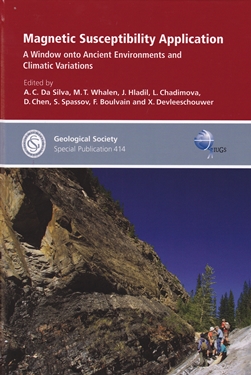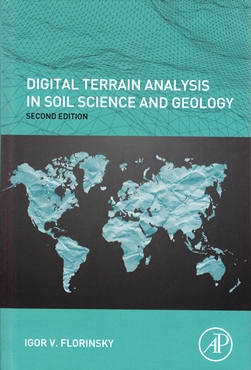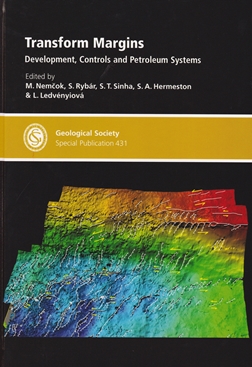Ladders to Heaven
 In Ladders to Heaven author Mike Shanahan demonstrates 'fig trees as the trees of life and trees of knowledge'. He shows that in combination the fig tree, fig-wasp and the fig fruit feed many layers of forest ecology and its food chain. The sub-title of 'How fig trees shaped our history, fed our imaginations and can enrich our future' more-or-less sums up the contents.
In Ladders to Heaven author Mike Shanahan demonstrates 'fig trees as the trees of life and trees of knowledge'. He shows that in combination the fig tree, fig-wasp and the fig fruit feed many layers of forest ecology and its food chain. The sub-title of 'How fig trees shaped our history, fed our imaginations and can enrich our future' more-or-less sums up the contents.
The book takes an informative stroll through aspects of the fig tree, the fruit (the fig) and the fig-wasp with many diversions describing fascinating snippets of how the fig tree has been inculcated into myths, ritual of many cultures and religions and fables and the role of the fig in the growth of civilisation and perhaps its potential ecological influences.
We learn that there are some 750 varieties of the species Ficus, with a wide range of forms, sizes and colour of tree and fruit. The fig flowers are often inside the fig shell and are pollinated by a tiny fig-wasp, frequently a specific wasp for a specific Ficus, by penetrating a tiny hole in the fig.
How this fertilization is achieved is amazing (page 64 onwards) especially the way a specific genus emits a unique fragrance to attract a particular wasp to it; this scent being detected by the female fig-wasp maybe up to 10km away. However it costs the fig-wasp its life (maximum 48 hours). The resulting seeds within the fruit are often eaten by birds then dropped.
Shanahan widens his fascination for Ficus by sharing his concerns about deforestation. He suggests the breakdown of the fig-cycle due to deforestation and fig-wasp annihilation causes non-fertilisation of figs, although the planting of significant numbers of fig trees, even perhaps by drone, could begin to effectively re-forest an area.
Ladders to Heaven is an entertaining read telling us how the fig tree has been part of natural history over maybe 80 million years. Botanical science is surrounded by good helpings of wide-ranging mythical stories, rituals and attitudes towards the fig tree. We meet dinosaurs, ape-men, ancient royals and strange spirits, pharaohs and farmers, the Mau-Mau and names such as Corner, Theophrastus, Wallace and Maathai.
However, the book will not give a botanist/biologist much specialist information, nor the student knowledge for their examinations (Wikipedia gives more!), but would help a traveller while away an otherwise frustrating journey or help fill periods of insomnia, or perhaps be a candidate for BBC's 'Book of the Week'.
Reviewed by Richard Dawe
LADDERS TO HEAVEN : HOW FIG TREES SHAPED OUR HISTORY, FED OUR IMAGINATIONS AND CAN ENRICH OUR FUTURE by MIKE SHANAHAN, 2016. Published by: Unbound, London W1S 2GF, 224 pp (hbk) ISBN: 978-1-78352-236-1 List Price: £16.99. W: www.unbound.co.uk
Magnetic Susceptibility Application: A Window onto Ancient Environments and Climatic Variations
 As the opening line of the introduction to this book states, ‘Magnetic susceptibility is powerful tool’ and, as such, its use in sedimentological research for palaeo-environmental studies and climatic reconstructions certainly underpins much of the recent literature.
As the opening line of the introduction to this book states, ‘Magnetic susceptibility is powerful tool’ and, as such, its use in sedimentological research for palaeo-environmental studies and climatic reconstructions certainly underpins much of the recent literature.
Being a well-established technique, there are plenty of texts that cover the subject area and this particular Geological Society Special Publication complements these by providing detailed, up-to-date research articles that have a broader audience appeal.
The volume is comprehensive, with 14 individual papers covering topics as varied as carbon/nutrient cycling in the late Devonian of Canada through to Mid-Jurassic carbonate ramp sedimentation in France. The geographical spread of the research is impressive with papers and data from China, Australia, Canada, EU, US, Russia and Iran.
There is a distinct focus towards carbonate sedimentology, which is not surprising given the subject area; but there are also articles on lake and clastic sedimentology to satisfy non-carbonate researchers and the wider geological readership.
Each article is supported by ample data and, in most cases, well-founded critical evaluations of the research findings. The comprehensive nature of the data is a clear strength of the volume and I imagine it will soon become a significant reference text for anyone working in palaeo-climatic sedimentary research.
A word of caution though - it is not a text for the novice and although the opening article does provide a useful summary of magnetic susceptibility as a sedimentary research tool, the more generalist reader will need to look elsewhere to build up their background technical and theoretical knowledge.
To me, the book misses a trick here as a good, well-referenced comprehensive review article on the theory and data-collection principles of the technique would have been an ideal partner to the more research-focused papers it contains.
Overall, the papers are very well-written, structured and illustrated and I particularly liked the editorial attention to detail where common units and terminology are used pretty much throughout the volume. If I have one quibble, it is the poor resolution/size of some of the graphical illustrations; the text is simply too small to read comfortably.
In general, this is another high-quality Special Publication that will be used as a reference volume for years to come. It’s a must if you have an interest in magnetic susceptibility for palaeo-environment reconstructions, particularly in carbonates, but it does have wider applicability the sedimentary community – I very much enjoyed reading it.
Reviewed by Nigel Cassidy
MAGNETIC SUSCEPTIBILITY APPLICATION: A WINDOW ONTO ANCIENT ENVIRONMENTS AND CLIMATIC VARIATIONS by A C DA SILVA, M T WHALEN, J HLADIL, L CHADIMOVA, D CHEN, S SPASSOV, F BOULVAIN AND X DEVLEESCHOUWER (eds). Geological Society of London Special Publication No 414. 2015. ISBN 978-1-86239-721-7. Hbk. 283pp.List Price: £100.00, Fellow’s Price: £50.00. W: www.geolsoc.org.uk/SP414.
Digital Terrain Analysis in Soil Science and Geology (2nd Edn)
 This book would be useful for anyone with an interest in Digital Terrain Analysis, including soil scientists, geologists, geoscientists, geomorphologists, geographers, and GIS scientists.
This book would be useful for anyone with an interest in Digital Terrain Analysis, including soil scientists, geologists, geoscientists, geomorphologists, geographers, and GIS scientists.
The book is aimed at either postgraduate or lecturer level, and assumes a level of mathematics. However, the mathematical approach is accessible, being focused mainly on the derivatives of surfaces (1st to 3rd order), vectors and trigonometry. It is compatible with current approaches of surface analysis generally adopted to date within GIS.
The book is divided into three sections. Section one, which comprises over half of the book deals mostly with a mathematical exploration of the analysis methods of describing shape before exploring effects of gridding, errors and filtering of elevation data. Chapter Eight provides useful information and thoughts on the visualization of data.
This section of the book is well written with clear explanations of the concepts, which together with examples provides a sound basis for the underlying principles of terrain surface analysis and the key parameters for such analysis. Tables 2.1 and 2.2 are particularly useful in this respect.
As a word of caution, this is not a book on spatial statistics and does not deal with statistical methods of spatial analysis. The reader would need to consult a separate textbook on these subjects. Sections two and three provide several examples of the use of DTM in the fields of soil science and geology, with an emphasis on soil science.
The geological examples are related to the location and interpretation of folding and faulting, lineaments, and larger scale global tectonic structures. O’Driscoll’s double helix example used to demonstrate global tectonics has found increasing interest in the past few years in the field of exploration geology and is a worthwhile reminder of this concept.
References are kept to the back of the book rather than after each chapter. Unsurprisingly, many of these are in Russian or are Russian in origin. While reference to some expected literature references on this subject are missing, the range of less well-known references is of interest.
As the preface to this book states, there has been a proliferation in the accessibility and use of different GIS programmes lately. This means that an understanding of their use and output is becoming increasingly important and relevant.
This book offers a good introduction to terrain analysis and I would recommend it to anyone requiring a sound introduction to this subject.
Reviewed by Rod Smith
DIGITAL TERRAIN ANALYSIS IN SOIL SCIENCE AND GEOLOGY (2nd edn) by IGOR FLORINSKY. Elsevier 2016. (hbk) 4506pp.eBook ISBN: 9780123850379 Hardcover ISBN: 9780123850362 List Price for bundle: $210.00 + tax. W: www.elsevier.com/books/digital-terrain-analysis-in-soil-science-and-geology/florinsky/978-0-12-804632-6
Transform Margins: Development, Controls and Petroleum Systems
 Transform margins are the Cinderellas of plate tectonics, having received far less attention than their convergent and divergent sisters. This volume, originating in a University of Utah workshop in late 2013, is a valiant attempt to redress the balance. The editors note that each presentation was followed by ‘time-unconstrained discussion’.
Transform margins are the Cinderellas of plate tectonics, having received far less attention than their convergent and divergent sisters. This volume, originating in a University of Utah workshop in late 2013, is a valiant attempt to redress the balance. The editors note that each presentation was followed by ‘time-unconstrained discussion’.
What an enviable event that must have been – and, evidently, successful because, unlike many conference volumes, this one hangs together as a coherent whole. Its focus is very much on the mid-Atlantic, on both its South American and Gulf of Guinea sides, but room has been found for the Caribbean (Cayman Trough), East Africa (Davie Fracture Zone), the Arctic (an invaluable overview of a relatively poorly-documented area), the Andaman Sea and (a slightly questionable inclusion) eastern India.
As is now the norm with Geological Society Special Publications, each chapter is copiously and relevantly illustrated, and colour is used unstintingly. Perhaps too little consideration was given by some authors to the reproduction sizes possible in pages of the known and standard format but I suppose we can all use a magnifying glass!
The main Central Atlantic study area is, of course, much more than the site of a pair of conjugate transform margins; it is the area where the spreading regimes of the North and South Atlantic merge, overlap and interact. Free-air gravity patterns document these processes with remarkable clarity, but leave the reader with a question. Are the margins formed really typical of transform environments? The further one reads, the more that question looms. After absorbing all the papers dealing with this area (and these are meaty productions and seldom easy going), it is impossible not to wonder whether these are transform margins at all. No single fracture zone defines either and it seems that the initial break-up involved extension as much as, and probably more than, strike-slip motion.
The other areas covered repeat this pattern, and the game is given away completely by the title of the Andaman Sea paper, which focuses on ‘….evolution from an extensional to a sheared margin’. This process, it seems, is fundamental to the evolution of most and perhaps all the margins discussed. Perhaps there are no transform margins, sensu stricto, anywhere in the world and initial extension has been needed everywhere to unclog the system and allow transcurrent motion to occur. To suggest this in no way reduces the value of this volume. It can plausibly be argued that it enhances it.
Reviewed by John Milsom
TRANSFORM MARGINS: DEVELOPMENT, CONTROLS AND PETROLEUM SYSTEMS by M. NEMČOK, S. RYBÁR, S. T. SINHA, S. A. HERMESTON & L. LEDVÉNYIOVÁ (Eds.) Geological Society Special Publication 431. 2016. ISBN 978-1-521-86239-744-6 385 pp. List Price £120.00. Fellows: £60.00 www.geolsoc.org.uk/SP431